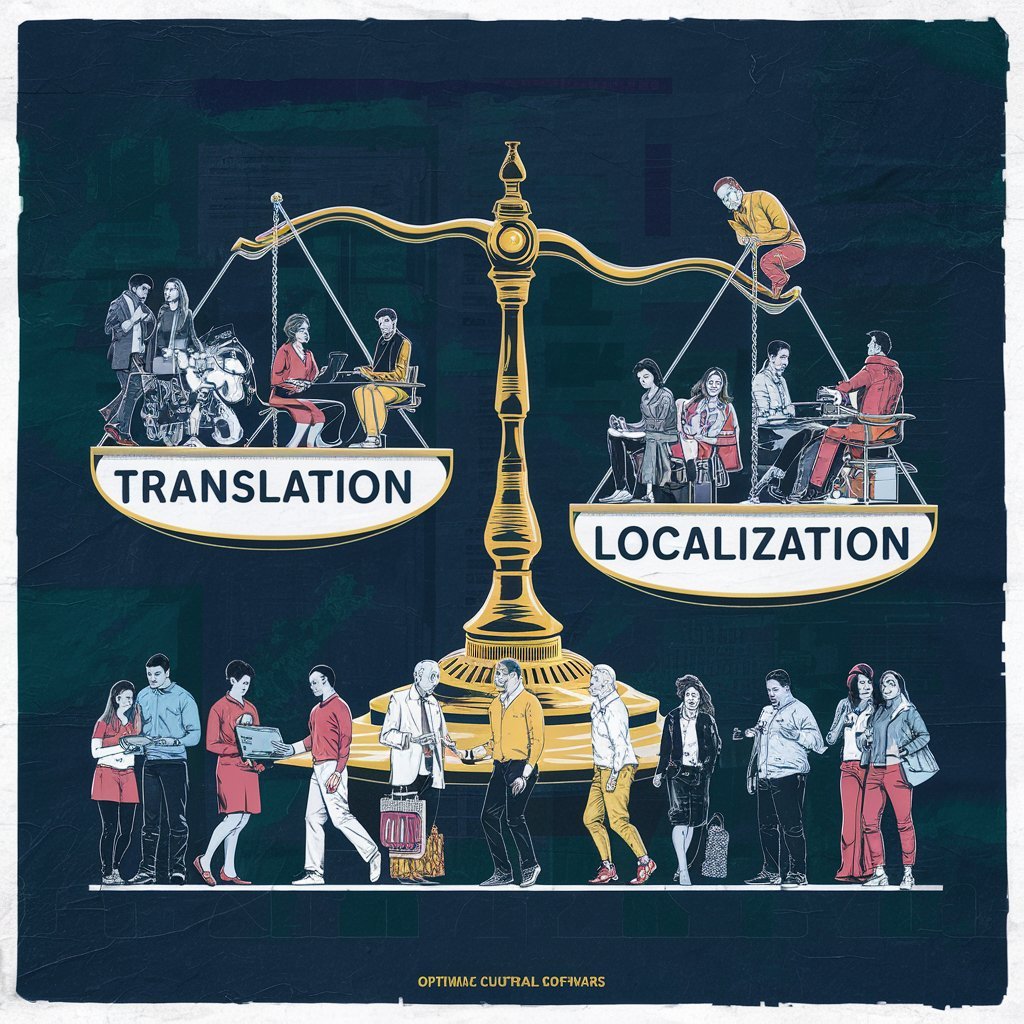Translation vs. Localization: Optimizing Your Software for Global Markets
To diversify geographically, developers and companies have two primary options for adapting their software to new languages: translation or

To diversify geographically, developers and companies have two primary options for adapting their software to new languages: translation or localization. Many people use the terms interchangeably without knowing their basic differences.
That’s probably because these are closely related terms and belong to the same category. Therefore, to clear the fog in your mind, let’s understand the differences between translation and localization.
This not only helps you increase your knowledge but also enables you to reach new target audiences more effectively and boost your chances of global success. However, before comparing the uses and benefits of software translation and localization, let’s discuss:
The Importance of Translation and Localization in Going Global
The software industry is a global sensation. With a CAGR of 11.74%, it amplifies growth chances for developers and companies looking to expand their reach across borders. Moreover, with the rise of mobile technology and the internet, users worldwide are actively seeking out innovative software solutions.
However, simply creating distinctive software is not enough. Language and cultural barriers are significant challenges on the way. Due to this, developers face problems in attracting and engaging international users. This is where translation and software translation company come into play.
They provide access to a vast pool of potential users anxiously waiting for innovations. This increases the user base of your software, boosts your bottom line, and provides an open space to play.
Translation vs. Localization: Let’s Understand the Difference
The essential purpose of both approaches is similar. However, they deal with different elements of software. So, let’s explore the differences between software translation and localization and delve into more details.
Software Translation
Software translation is the process of adapting the text elements to resonate with the target audiences’ linguistic preferences. Carried out by professional software translation services, it ensures that user interface text, error messages, technical terminology, and all other elements related to your software are translated accurately in the language of your target customers. One thing which is very crucial in software translation is to maintain the functionality and technical integrity of the code. This makes it quite a challenging job!
Software Localization
Localization goes beyond simple translation. It won’t be wrong to say that translation is the prerequisite for localization. It involves tailoring your entire software to the unique cultural context of your target market. The factors included in this approach are:
- Date and Time Formats: The localization process involves adjusting date and time formats to match local conventions, such as DD/MM/YYYY vs. MM/DD/YYYY.
- Currency Symbols and Measurement Units: It also involves compliance with the measurement and currency symbols used in the target region, such as feet vs. meters and USD vs. EUR considerations.
- Legal Requirements: It is to ensure the software adheres to legal and data privacy regulations of the target market.
- Cultural Sensitivity: Software localization includes adapting colors, imagery, humor, and references to resonate with the target audience’s cultural preferences.
| Translation | Localization | |
| Focus | Accuracy of text conversion | Cultural adaptation |
| Examples | Menus, error messages, UI text | Date formats, currency symbols, imagery |
| Considerations | Technical accuracy, code functionality | Cultural sensitivity, legal requirements |
Generally, the main difference between software translation and localization is the difference in elements. In translation, we focus on basic elements such as the accuracy of text, including UI, menus, and error messages. Whereas, in localization, we focus on cultural adaptation, including imagery, currency, and symbols.
However, one thing that makes localization an effective approach is testing. It involves asking a few users from the target market to use the software and provide their feedback. They assess the software’s functionality, layout, and cultural appropriateness. Their feedback determines whether the software is ready to launch in the global market or not.
Case Studies: Translation and Localization Success Stories
Many software companies initially face the significant hurdle of language barriers. This limits their growth potential and restricts their user base primarily to domestic markets. Here is how some renowned companies tackled this challenge:
Dropbox – A Cloud Storage Platform
Challenge: Initially, the technical jargon and English-only interface became a hurdle to user adoption of Dropbox in non-English speaking markets.
Solution: To improve the accessibility of its platform for a global audience, Dropbox implemented a comprehensive translation and localization strategy. It tailored its marketing campaign to resonate with diverse linguistic and cultural preferences. Now, their interface has become very user-friendly. And users of different languages find it easy to upload and download files, manage their storage, and navigate all the features.
Airbnb – Connecting Travelers and Hosts Worldwide
Challenge: Similar to Dropbox, Airbnb was focussed on serving English-speaking users in the start. But this limited its ability to connect travelers from diverse linguistic and cultural backgrounds with potential hosts across the world.
Solution: To bridge the language and cultural gap, Airbnb adapted its strategy to resonate with the target audience’s preferences. Now, they offer their services in multiple languages, allowing international users to search for listings, connect with hosts, and easily navigate the booking process in their local language.
Spotify – Music Library
Challenge: Spotify is a music library with vast options, but users in different countries prefer music specifically in their local language.
Solution: Spotify translated its interface to make its app more user-friendly. Moreover, they implemented a strategy of localized music curation. The result: the playlists and recommendations now align with the regional music trends of the users. Thus, catering to the specific tastes of listeners in different countries.
WhatsApp – Instant Messaging App
Challenge: This messaging app had a great concept, but the approach was limited. WhatsApp was only available in English at first. This made it more difficult for the app to connect users from all over the world and to realize its full potential.
Solution: WhatsApp adapted its user interface according to the local preferences of diverse audiences and translated its features into various languages. Now, it’s one of the most renowned messaging apps in the world, catering to users from diverse backgrounds and fostering global communication.
Uber – Ride Booking App
Challenge: Uber’s idea of ride-hailing services was unique and innovative. However, language barriers prevented the users from understanding the app’s functionalities and features.
Solution: Uber adapted its app and ensured its availability in a multitude of languages. Beyond translation, Uber started displaying fares in local currencies and utilizing familiar landmarks for navigation. This ensures a smooth user experience for people around the world.
These case studies illustrate the significant impact of translation and localization on the global success of your software. Depending on our needs, you can decide whether you require simple translation or adapting software to the specific cultural context of the target markets.
Ready to Take Your Software Global?
Understanding the differences between translation and localization helps in the better optimization of your software for the global market. Moreover, they help you unlock a whole new world of opportunities, adapting your software linguistically, and localizing it to cater to specific cultural contexts. In a nutshell, they help you expand the user base, strengthen your brand image, and drive revenue growth by entering new markets with culturally sensitive, user-friendly software. Good luck!









